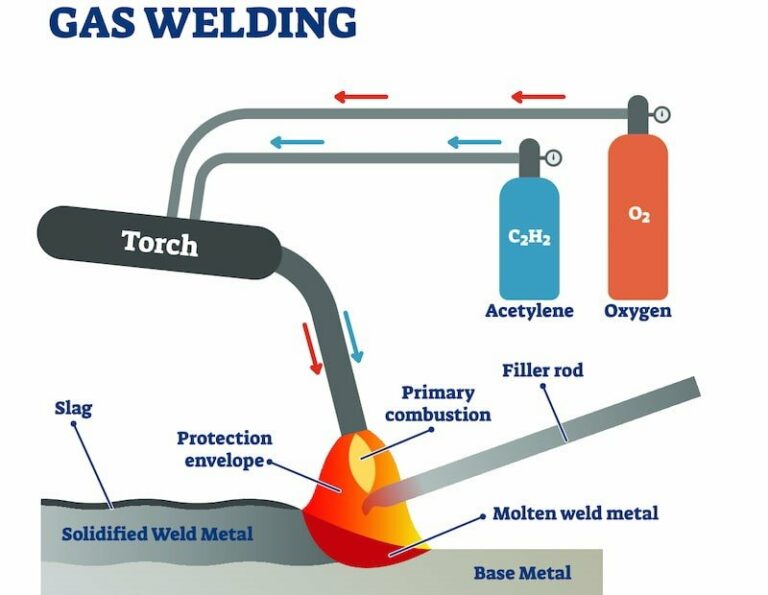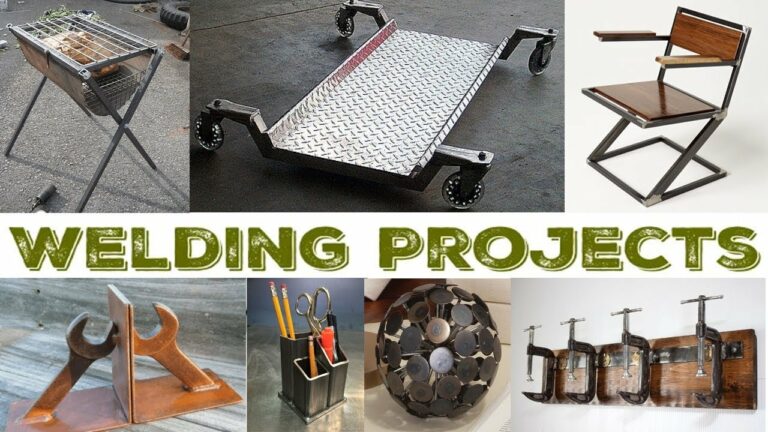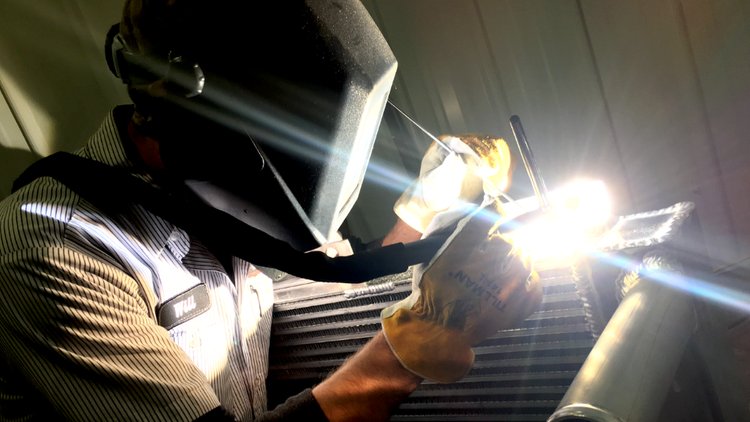Troubleshooting Aluminum Welding Issues: Expert Solutions
Welding aluminum can be a challenging task, often leading to a series of frustrating problems. But fear not, for there is a solution. In this article, we will delve into the common issues encountered when welding aluminum and explore effective techniques to overcome them. From understanding the properties of aluminum to selecting the appropriate welding methods, we will equip you with the knowledge and skills needed to tackle the problems welding aluminum poses. Say goodbye to the obstacles and master the art of welding aluminum like a pro.
Problems Welding Aluminum
Welding aluminum is a widely used technique in various industries, including automotive, aerospace, and construction. While aluminum offers excellent properties such as lightweight, durability, and corrosion resistance, it also presents unique challenges during the welding process. In this article, we will explore the common problems that welders face when working with aluminum and discuss potential solutions to overcome these challenges.
1. Aluminum Oxide Formation
One of the primary difficulties when welding aluminum is the rapid formation of aluminum oxide on the metal surface. This oxide layer has a higher melting point than aluminum itself, making it challenging to achieve proper fusion during welding. The oxide layer creates a barrier that prevents the weld from bonding effectively, resulting in weak or incomplete welds.
Prevention and Solution:
- Thoroughly clean the aluminum surface using a stainless steel brush or chemical cleaning agents to remove the oxide layer.
- Use a dedicated stainless steel wire brush for aluminum to prevent cross-contamination from other metals.
- Consider using a dedicated aluminum welding wire that contains a chemical flux coating to help remove aluminum oxide during the welding process.
2. High Thermal Conductivity
Aluminum possesses a high thermal conductivity, which means it quickly dissipates heat, making it challenging to maintain the necessary temperature for welding. This rapid heat dissipation can lead to cold welds, insufficient penetration, and a weak weld joint.
Prevention and Solution:
- Use specialized welding techniques such as pulse welding or AC pulse welding to overcome the heat dissipation challenge.
- Preheat the aluminum material to increase its temperature before welding.
- Consider using a larger welding gun or torch to provide a concentrated heat source.
- Employ preheating blankets or heat sinks to maintain the temperature during the welding process.
3. Aluminum’s Tendency to Warp
Aluminum has a significantly higher coefficient of thermal expansion compared to other metals, making it prone to distortion and warping during welding. This distortion can lead to dimensional inaccuracies and compromise the structural integrity of the welded aluminum part.
Prevention and Solution:
- Use adequate clamping or fixturing techniques to minimize distortion during the welding process.
- Employ a backstep welding technique to distribute the heat evenly and reduce the chances of warping.
- Consider using pre-welded jigs or fixtures to maintain the desired shape and prevent distortion.
- Use slower cooling methods such as air cooling or use heat sinks to control the cooling rate.
4. Porosity and Gas Entrapment
Another common issue when welding aluminum is the formation of porosity, which is caused by the entrapment of gases in the weld pool. Aluminum is particularly susceptible to absorbing hydrogen, moisture, and other gases. When trapped inside the weld, these gases can create voids, weaken the joint, and reduce the overall quality of the weld.
Prevention and Solution:
- Properly clean and dry the aluminum surface before welding to minimize the presence of moisture and other contaminants.
- Ensure the welding area is adequately shielded with an appropriate shielding gas, such as argon, to prevent gas absorption by the molten aluminum.
- Use a dedicated aluminum welding wire that contains a flux coating, which helps release gases and reduces the chances of porosity formation.
- Optimize your welding parameters, including the welding speed, current, and voltage, to minimize the absorption of gases.
5. Sensitivity to Heat Input
Aluminum has a relatively low melting point compared to other metals commonly welded. This low melting point makes it highly sensitive to heat input, making it prone to burn-through or excessive heat-affected zones (HAZ). Controlling the heat input and avoiding excessive heat can be challenging when welding aluminum.
Prevention and Solution:
- Use lower welding currents and faster travel speeds to minimize the heat input.
- Employ pulse welding techniques to control the heat input and reduce the chances of burn-through.
- Practice proper joint design and fit-up to ensure a suitable gap for heat dissipation.
- Use heat-reflective materials or heat sinks to redirect the heat away from sensitive areas.
6. Lack of Filler Metal Fusion
When welding aluminum, achieving proper fusion between the base metal and the filler metal can be challenging. This lack of fusion can result in weak joints and compromised structural integrity.
Prevention and Solution:
- Clean the joint area thoroughly to remove any contaminants that may hinder fusion.
- Ensure proper fit-up and maintain a suitable gap between the base metal and the filler metal to allow complete fusion.
- Choose the appropriate filler metal and adjust the welding parameters to ensure optimal penetration and fusion.
- Use specialized welding techniques such as plasma arc welding or friction stir welding to enhance fusion between the base metal and filler metal.
7. Inadequate Joint Design
The joint design plays a crucial role in the success of welding aluminum. Inadequate joint design can lead to weak welds, poor penetration, and increased stress concentration.
Prevention and Solution:
- Opt for joint designs that allow better access to the welding area and provide proper space for filler metal deposition.
- Avoid sharp corners or abrupt changes in joint geometry, as they can cause stress concentration and potential failure points.
- Consider using double-sided or backside welding techniques for improved penetration and joint strength.
- Consult welding codes and standards for recommended joint designs specific to different applications.
8. Lack of Weld Pool Control
Controlling the weld pool during aluminum welding is crucial to achieve optimal penetration, fusion, and overall weld quality. However, the fluidity and fluid behavior of the aluminum weld pool can be challenging to manage.
Prevention and Solution:
- Practice proper welding techniques, including maintaining a stable arc length and controlling the travel speed to achieve better weld pool control.
- Consider using a smaller electrode or welding wire diameter for better control over the weld pool.
- Use specialized welding equipment, such as a pulsed MIG welder or TIG welder, to enhance weld pool control.
- Invest in advanced welding systems that offer features like programmable waveform control and automated weld pool monitoring.
9. Incompatible Base Metal Alloys
Aluminum alloys come in various compositions and grades, and not all alloys are compatible with each other in terms of welding. Welding incompatible base metal alloys can lead to brittle welds, cracking, and reduced mechanical properties.
Prevention and Solution:
- Ensure you understand the composition and properties of the base metal alloys before attempting to weld them.
- Consult welding codes, standards, and manufacturer guidelines to determine the compatibility of different aluminum alloys.
- Use compatible filler metals that match the composition and properties of the base metal alloys to ensure proper fusion and joint integrity.
- Consider pre- and post-weld heat treatments to alleviate potential issues caused by welding incompatible aluminum alloys.
10. Lack of Proper Training and Experience
Welding aluminum requires specific knowledge, skills, and experience to overcome the challenges associated with this material. Lack of proper training and experience can lead to subpar weld quality, increased rework, and potential safety hazards.
Prevention and Solution:
- Seek professional training and certifications specific to aluminum welding to enhance your skills and knowledge.
- Gain hands-on experience under the guidance of experienced aluminum welders to improve your technique and problem-solving abilities.
- Stay updated with the latest welding technologies, techniques, and industry best practices through continuous learning and professional development.
By addressing the common problems encountered when welding aluminum and implementing effective solutions, welders can achieve high-quality and reliable aluminum welds, ensuring the integrity and performance of the final product. It is essential to understand the unique characteristics of aluminum and apply appropriate techniques to overcome the challenges for successful aluminum welding.
Frequently Asked Questions
What are common problems encountered when welding aluminum?
Common problems encountered when welding aluminum include poor weld quality, difficulty in controlling the weld puddle, and greater sensitivity to contaminants. Additionally, aluminum has a higher thermal conductivity compared to other metals, which can lead to overheating and distortion. Achieving proper fusion and avoiding cracks can also be challenging due to aluminum’s high thermal expansion coefficient. Lastly, aluminum oxide quickly forms on the surface, necessitating thorough cleaning and the use of specialized filler materials.
Why is controlling the weld puddle difficult when welding aluminum?
Controlling the weld puddle when welding aluminum can be difficult due to its high thermal conductivity. Aluminum quickly conducts heat away from the weld area, making it challenging to maintain the desired temperature and control the molten pool. Proper technique, such as using higher heat inputs and employing a shorter arc length, can help mitigate this issue.
What causes poor weld quality when welding aluminum?
Poor weld quality when welding aluminum can be caused by several factors, including inadequate cleaning of the base metal, improper shielding gas flow, and insufficient penetration. Other common causes include using the wrong filler alloy, incorrect welding parameters, and poor joint design. It is crucial to address these factors to ensure the production of high-quality aluminum welds.
How does aluminum’s sensitivity to contaminants affect the welding process?
Aluminum is highly sensitive to contaminants, such as oil, grease, and moisture, which can significantly affect the welding process. These contaminants can lead to porosity, lack of fusion, and other defects in the weld. Prior to welding, thorough cleaning of the aluminum surface is essential to remove any contaminants and ensure a successful weld.
What techniques can be employed to avoid aluminum weld distortion?
To minimize aluminum weld distortion, several techniques can be employed. These include proper joint fit-up and alignment, the use of clamps or fixturing to hold the workpiece in place during welding, and the application of tack welds to help distribute heat evenly. Additionally, welding in a balanced sequence, alternating between different sections of the joint, can minimize distortion.
Why is it important to use specialized filler materials when welding aluminum?
Using specialized filler materials when welding aluminum is important because aluminum has different metallurgical properties compared to other metals. Aluminum-specific filler alloys are designed to match the base metal’s characteristics, ensuring better compatibility and weld integrity. These fillers also have a lower melting point than the base metal, allowing for better control during the welding process.
Final Thoughts
In conclusion, problems welding aluminum can pose challenges for welders due to the unique characteristics of the metal. The formation of oxide layers and the high thermal conductivity of aluminum can lead to difficulties in achieving proper weld penetration and fusion. Additionally, the need for specialized equipment and techniques further complicates the welding process. However, with the right knowledge and skills, these challenges can be overcome. By understanding the properties of aluminum and employing suitable welding procedures, welders can successfully overcome the problems associated with welding aluminum.


